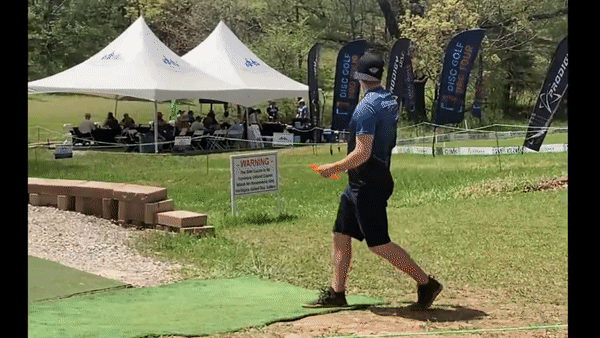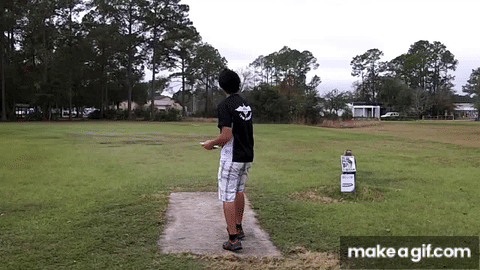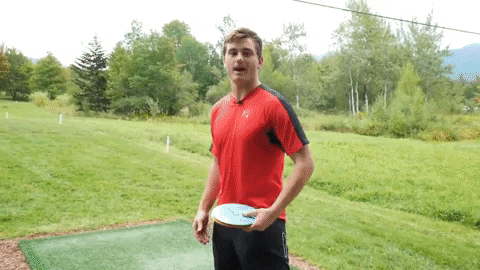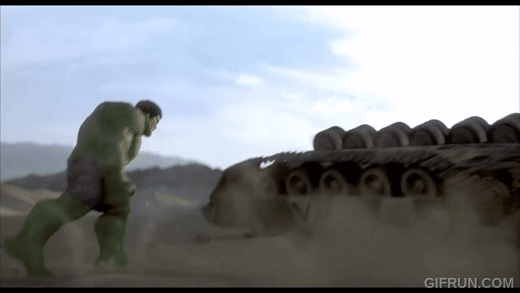I don't think I've ever hit the quote button that many times. Props to the upgrades to the forum though making this process far smoother for us and how it works.
I don't like selling the idea of an overcorrection being the solution. For example - nobody should be arming the disc. But if you're not using it at all because you're focusing on the shoulders and everything else, while being too loose or passive with the arm, I can see using an overcorrection to get the body into new territory. The "out-in-out" and "wide-narrow-wide" language is a better directive than "arm the disc."
I also don't like "uncurl" as a term. I'm not saying it's a made up word or anything like that, but in kinesiology we talk more about curling vs extending. As I commented in his Forming the Whip video, I think extend-curl-extend also fits the bill if we're talking about body mechanics. That said "out-in-out" has been around since at least 2019 (in my quick research on it) and is the quickest to type, with the least amount of syllables, so is the easiest to remember and teach.
I also think out-in-out is a simple easy way to communication the action with others. Always keep it simple. This is a concept that I learned from Jaani as I spent far to much time trying to figure out all these intimate details that were only making my understanding of disc golf worse and more frustrating.
However, I will hit the fucking table with a goddamned sledgehammer to try and pound the point of proper language is important while coaching in ANYTHING. Listening to people talk about disc golf swings is like listening to someone talk about how they are swinging arrows with a bow. That sounds like nonsense right? Cause the descriptors don't accurately describe the action. So why are people still continually using poor language to describe the actions of the swing?
However, the last 2 OT videos have bothered me a bit, even though I'm glad Josh is correcting and refining what he teaches.
I'm just going to copy paste this like through the rest of the replies here.
The issue people will have ick and cringe from Josh is because he is teaching as an authority when he's a student. People are literally listening to a first year college student talk about a complex subject like he's got a masters in the subject.
You might be "hard to like" at times, but at least you're open for ideas and discussing form.
To me, josh is all over the place and I do not like the way he's going lately.
Won't go on, cause I'll end up like sheep with a way to long rant that people won't read anyway...

(I'm kidding)
I'm not sure if the "hard to like" was aimed at me, I'm guessing it was. And I'm around to discuss idea's and learn. I rarely aim my voice at a person in general, but Josh is unfortunately a really easy target as well. He's really big now for "coaching" but.. he's still a student masquerading as a coach. Were literally watching a guy develop his knowledge into disc golf form, but teaching the whole way and just correcting himself constantly as he figures out "oh shit, that wasn't right."
So it seems Josh has gone from 90/90 and Twirlybird drills, which assume inertial forces will produce the pocket and elbow forward positions as long as the body mechanics are correct, to teaching just the arm motions and the body will support.
I'm confused, somebody tell me who's right.
And, is this really the Beato drill?
The Beato drill is really really important for the extension into the hit. The problem is it's misunderstood by practically everyone, and misused by anyone who actually tries to practice it. I've spent a LOT of time thinking in the last year alone on how to shoot a video explaining how to properly use the beto drill. I'd rather put out my best content, vs "right now" content.
We have to accept the "out in out" style concept of the swing for starters for it to make sense. We have to then understand that the swing is a bit of both. We dont "pull", but we curl. We use our brace, an abrupt stop, to drive the hips to drive the rotation and start and BUILD the kinetic chain to the disc. The idea of "twirly bird" or the "noodle arm" is something I've been teaching for a long while. Why? Because it builds the foundation of what you need to do for good, clean, easy, low impact form. IT helps you learn to let the body flow and move. Then we can start adding sauce to it. We wanna build that natural chain, which we can by hitting the brakes and literally noodle arming the throw.
I mean, lets think about this really really hard. I mean easy.
A basic noodle arm technique throw will net you 300 feet with almost 0 effort.
While a "pull style" muscled mechanic will net you around 200-250 with insane amounts of energy used.
Which of those power chains is the best? The one that has you gassed after 5 throws, or the one you can do all day.
Then we can turn and look at pro players who effortlessly throw 200 feet with putters. Why? Because they are not muscling, they are building an efficient chain of energy.
So, is one way right or not? They are both right, when used properly at the correct time.
When we have built a good flowing form, we can add things to it like the beto drill to help ADD to the power. We always wanna follow the chain and accelerate it. When we perform any action that is a muscled action and not an additive action, we kill the chain and re-start it.
1. Josh will say that he works more from a "positional" or now "hybrid" or "amalgamator" perspective. He does now talk to many coaches and allows each of them to influence him, and likes to try out different ideas.
...
Josh looks at everyone and tries to grab things here and there, and knows that he is willing to try whatever he can to help someone improve regardless of its theory or source.
What I'm currently seeing is the one step forward 10 steps back with the way this is working.
It's feeling like he's trying to reach for a conclusion before understanding the material and studying it.
Some of these things I've settled on only half heartedly was after 2 years of studying the technique and gathering ALL the data I could to have some level of conclusion that I can defend my standpoint of.
So in turn, what I have continued to see happen over and over again from Josh is him teaching stuff he's still not yet understood, but teaching it as "the method." .. To which He's already had to back track on publicly at least once. Which was also funny, because some of that stuff was more accurate than this "advanced" stuff he's attempting to teach now.
This isn't in part because he wont talk to me either. That's a whatever at this point. It's his loss, not mine. How this community works together is just... disappointing to me. I love that in here we can talk, but you get outside of DGCR and its about subscribers, it's not about disc golf and coaching.
It's great that he's trying to think outside of the box and put his own plan together, but.. it just really feels like he's trying to also re-hash old theories and reinvent the wheel before he understands the topic.
2. He has some interest in a version of what people call a "pull," which also has some commonalities and direct influences from Taylor. I still talk to Josh about it, and he reports measurable differences in his own increased armspeed that IMO are part mechanics and part mentality/intent.
I think a bit of issue here is with the Tech disc and not enough study. It's a valuable tool and I think he's seeing that. But he's chasing a bit of data with his theories, not the practicality of the processes overall.
The problem with a device like this is you're doing what "feels" like scientific testing, but you are basically having a theory, and then having data, but the whole process of how to get there is practically lost because of how instantaneous the data is and how your getting it. Because you can cheat the data by ignoring the process.
I am not at all persuaded that you MUST arm the disc to get it to overtake the shoulders.
The arm will naturally overtake the shoulders. But if you try and bypass the chain by yanking the disc or pulling it at any point, you're overtaking the chain, vs adding to the chain. If we let the shoulder bring the disc into the pocket, we are now in a "null zone" where we can add to the chain. The pocket is where a LOT of the magic happens as the energy is basically wound up at that point and ready to explode out as we extend the arm. This is where you want to adjust to a deep pocket, the disc is on the far peck, we can tuck it in and really work on resisting the rotation and exploding out as we extend the arm into the swing. But this is all "help the power" stuff. Anytime someone talks in a method now that talks about arming the disc and yanking and pulling and whatever, all I wanna do is tell them to get bent and go pull their pudd and stop hurting the process that has been building and forming for a few years now as we try and understand it.











